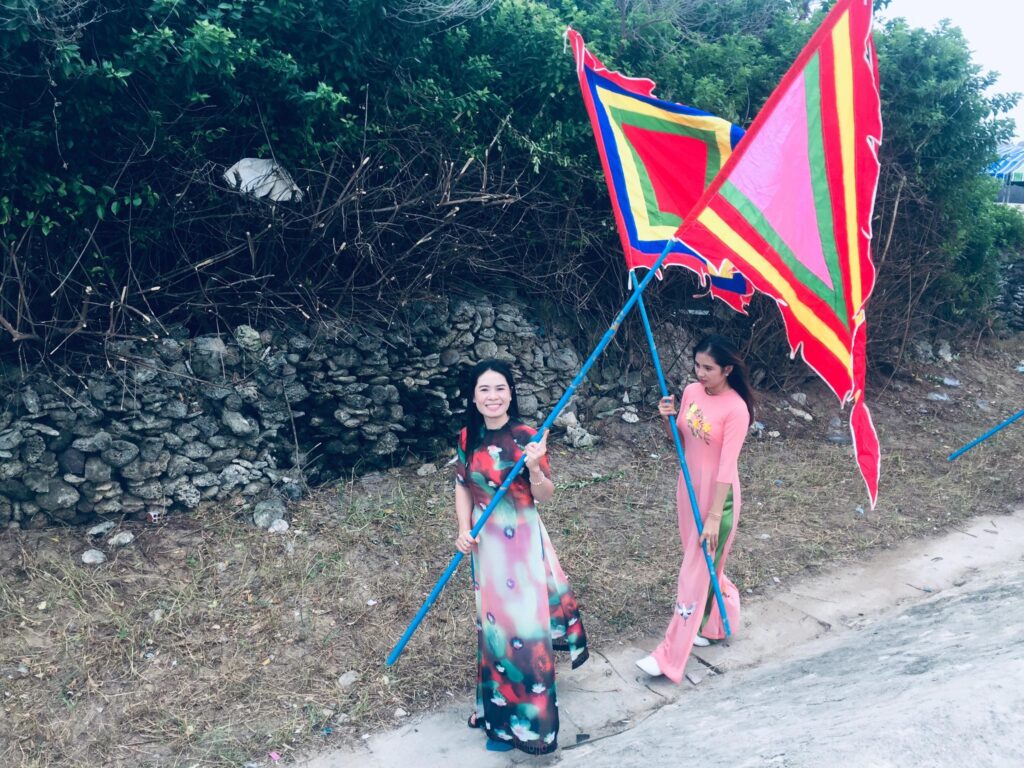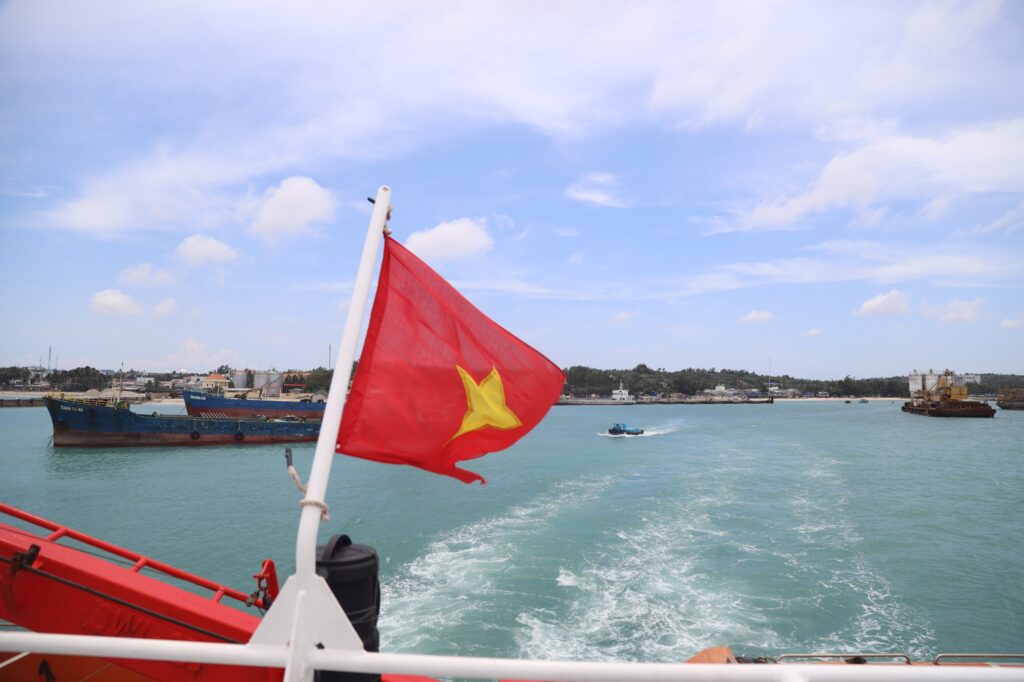The Chinese character 帶, pronounced [đái] in Sino-Vietnamese, means “sash,” “belt,” or “ribbon.” In Vietnamese, dải carries a similar meaning: it is used to refer to something long and narrow, such as dải núi (mountain range), dải sông (river strip), or dải đất (stretch of land).
The Vietnamese word dải is a localized adaptation of the Sino-Vietnamese word đái.
On Phu Quy Island, the expression “đi dải” refers to a cultural activity closely tied to the annual hat boi (classical opera) festivals held at local religious institutions such as lang (royal tombs), van (communal shrines), mieu (temples), chua (pagodas), and lang (villages). In this tradition, participants usually wear the ao dai (Vietnam’s traditional long dress) to convey solemnity and reverence.
The image of flowing silk from the elegant ao dai worn during this event may have contributed to the naming of the practice as “dải” (meaning “ribbon” or “strip”). During “đi dải”, participants form a long line starting from the outer gate, proceeding straight into the main sanctuary of the sacred space. Leading the procession is a representative who carries an offering plate—typically with flowers or fruits, along with a donation envelope to be presented at the altar.
This orderly, elongated line of people—resembling a human ribbon—may also explain the name “dải” in this cultural context.
In today’s modern life, many traditional local festivals are at risk of fading away. Therefore, events like “đi dải” present valuable opportunities for younger generations to engage with and inherit rich cultural traditions. Especially in the current era of tourism development, it is vital that we, the youth, embrace, preserve, and promote these traditions. Tourism should not be limited to scenic views and cuisine; Phu Quy Island should also be known as a destination rich in traditional island culture and heritage.
A Local of Phu Quy Island










